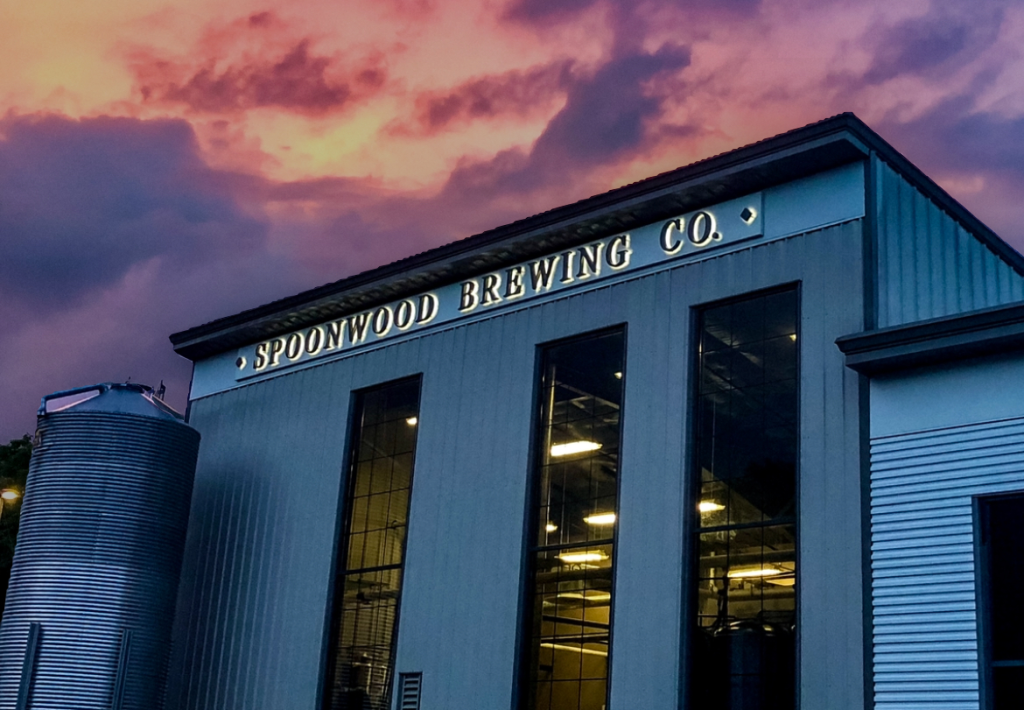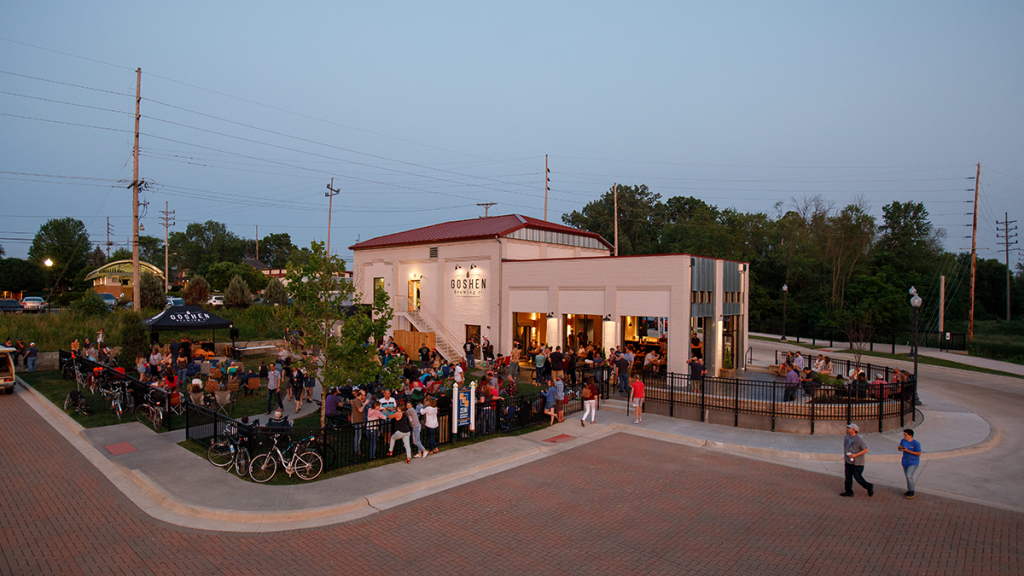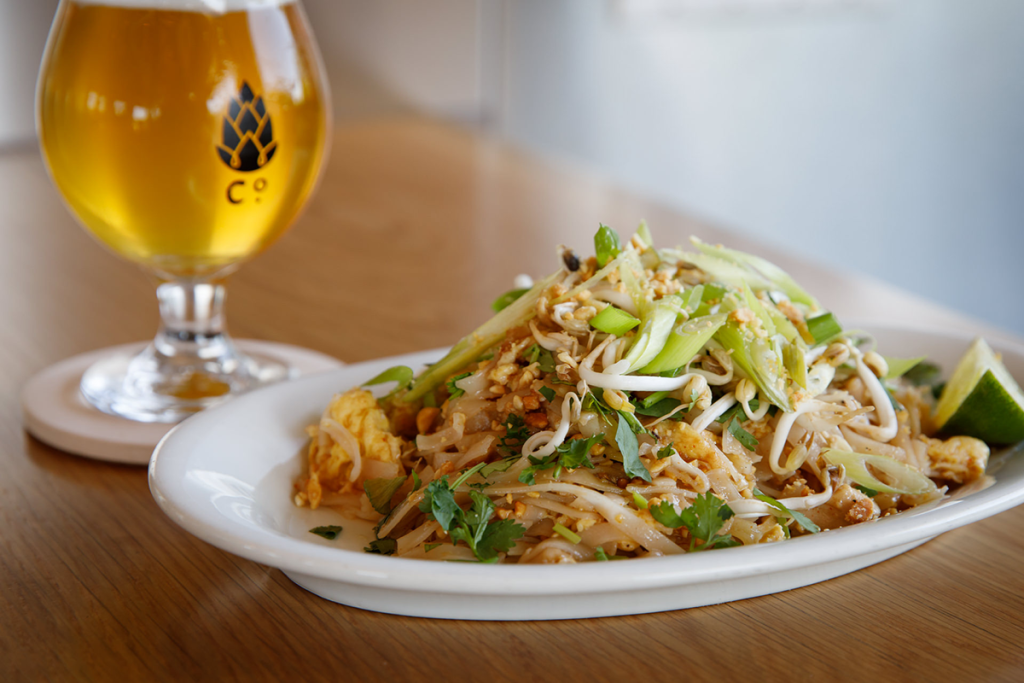
In 2024, brewpubs were down 3.6% year-over-year from a production standpoint. That negative figure comes as no surprise given the wealth of unprecedented challenges currently facing the U.S. craft-brewing industry. But it’s important to note that brewpubs were on par with Craft as a whole (down 3.8%), and this market segment fared better than both taprooms (-4% on average) and microbreweries (-6.8%).
According to brewpub owners, despite difficult conditions, their business model still presents a wealth of opportunities unavailable to production breweries and even satellite sampling spaces. Key among them is the ability to have meaningful, in-person interactions with consumers, satisfy patron expectations via a universally familiar restaurant model, and differentiate one’s business on multiple fronts, including beer, food, service, environment, events, programming and more.
Back to Basics
For Grant Scorsone, co-founder of South Pittsburgh brewpub, Spoonwood Brewing, 2024 started off with a bang. Revenue from January through June was in line with 2023, which had been a very good year for the 10-year-old business. But with the onset of July came a drastic and completely unexpected plummet. Takeout business dropped dramatically, and the business’ total guest count decreased by 20%.
This despite a solid reputation for having taken over a decrepit dive bar, leveled it and erected a new-construction, family-friendly brewery-restaurant with room for 200 inside and dual patios (seating an additional 80 guests) which double as an outdoor concert space referred to by many as “the Red Rocks of Western Pennsylvania”. This despite having survived COVID without the benefit of its above-average environs, doing as so many others had and pivoting to takeout and to-go beer, before graduating to Plexi-glassed, social-distanced service.
Scorsone was shocked and ready to act, but unable to pinpoint any singular reason for the sudden downturn. At first, he believed it was the recent departure of Spoonwood’s head chef of eight years. There had admittedly been some bumps in the road where food quality was concerned, but by then he says his team was well on its way to addressing that.

From there, Scorsone made the logical jump to economics, but that seemed odd. Despite rapidly rising costs of goods, labor and utilities, Spoonwood had made the conscious decision to absorb the bulk of it and hadn’t increased food prices since November of the previous year.
With those potential causes unlikely, Scorsone took a step back and put himself in the shoes of his patrons, especially the ones who appeared to have retreated.
“We are a suburban brewpub with lots of family patrons, and we understood that families were facing tough decisions on discretionary spending,” says Scorsone, who made the decision to give those families as many reasons as possible to visit Spoonwood. “We celebrated minor holidays. We got better at posting great pictures of our food, beers and cocktails. We communicated with our staff what we believed was happening and asked them to be a part of changing the dynamic.”
That request extended from the front-of-the-house to the kitchen to the brewery. Scorsone says he received immediate buy-in from all factions who went on to analyze their day-to-day and get back to some of the basic building blocks of the hospitality industry.
“The basics became important. Little things like smiles, making sure people were happy with what they were receiving,” says Scorsone. “Our brewery brought back some customer favorites, and we started promoting our 10-year anniversary. We gave thanks to everyone that allowed us to succeed over the past decade.”
It sounds simple, but Scorsone admits that it took a lot of hard work. And in the end, it worked for Spoonwood. Scorsone says November and December were so good that the business nearly broke even for the last six months of the year. It’s instilled long-term change to weather a storm with no end in sight.
“Moving forward, we are meeting weekly as a management team to review the events calendar, labor, food, maintenance and anything else that needs attention,” says Scorsone. That added attention on all fronts has made a big difference, but even the most concerted efforts can’t fix everything in such a multifaceted, arduous business climate.
“Quarter one of 2025 appears to be back into a more predictable groove, but trying to run a brewpub based on historical markers like food cost, labor cost, or gross revenues is nearly impossible. I would stand a better chance of being struck by lightning while inside than find patrons who are willing to –or capable of –paying for a deliciously made burger for which my food cost is in the 25 to 30% range.”
Employees are a Precious Resource

Jesse Sensenig first fell in love with beer while he and his wife were living in Colorado. Like so many before him, he plunged down a fermentation-science rabbit hole, homebrewing at a “relentless” pace before dabbing his feet in the commercial space care of an internship at a small production brewery. While an affection for quality ales and lagers was at the heart of it all, there was something the Sensenigs were even more infatuated with: craft-brewery culture. The camaraderie and communalism driving the industry and its fanbase is what drove the couple to open Goshen Brewing in the Indiana college town of the same name in 2015.
“We pushed to open a space that was focused on community, great beer, food, music and events. No TVs, just a space for the community to come together,” says Sensenig. “We are solar- and wind-powered, collaborate with local businesses and community members on events, and treat people with respect and dignity.”
That altruistic all-around approach has served the Sensenigs well over the past decade, earning them long-term patronage that has helped their brewpub make it through both the pandemic and more recent trials facing all U.S. brewers. Sensenig says Goshen’s 2024 production numbers were almost identical from the previous year. Revenue figures are also similar but came up slightly short of 2023.
“Managing the costs of food, goods, services, insurance and other line items has been an ongoing challenge and struggle,” he says. “We make changes in menu pricing and efficiency only to have those changes met with increased pricing from our vendors.”
It’s a familiar conundrum for craft brewers, but rather than fixate on the unfixable, the Sensenigs have opted to double-down on what they can control. For them, that’s their product, service, and first and foremost, their staff.
“We have a strong team that we treat fairly, and we look to them for creative ways to get people in the door and get people coming back.”

This technique of not only being open to ideas but soliciting them from employees has worked well at Goshen. Together, the Sensenig’s team have established a successful roster of outdoor music shows and other events that resonate with customers and keep them and convinces them to return on a consistent basis. This is true of less obvious programming like Tuesdays, where the only dish on the menu is pad Thai and guests who wear their Pad Thai Tuesday shirts get $3 off their order. Sensenig says his brewpub is packed every Tuesday as well as during a spin-off summer event where patrons can “pad Thai-dye” that Goshen-branded merch.
It takes a village, but rather than simply take from their village, the Sensenigs constantly look for ways to reward staff for their hard work and contributions.
“Invest in your employees and promote from within. We have never hired out of house for a manager or shift-leader position. The brewery and head chef positions would be the only ones where we would consider an outside hire. Even so, we never have,” says Sensenig. “Give employees profit-sharing if you have it and be open about the business.”
Give the People What They Want
When Tadd Maudlin started homebrewing while attending Purdue University in 1990, he had no aspirations of opening a brewpub. Even when he went pro after a friend convinced him that his gluten-reduced beers could fill a gaping hole in the beer aisle, he refused to commit to a physical location, much less a brewpub. Instead, he entered into a contract agreement with an Orlando brewery to produce his recipes under the moniker Blast Beer Co.
“My distributor got the beer in Winn-Dixie stores and Total Wine & More. Growth was slow, but I regularly visited each store and checked the displays to make sure inventory was good,” says Maudlin. “I earned a spot in the refrigerated section in less than a year. Then it really started to sell.”
Bullish on his brand and product, Maudlin made plans to open a retail location for Blast in his hometown of Key West in 2023. A lease was signed, and floor plans were being drawn up when, suddenly, Maudlin’s distributor went bankrupt. Unable to find a new distribution partner that would get Blast beer into grocery chains, he decided to pivot. The kitchen sections of the retail spot’s floor plans were amended to include a one-barrel brewhouse, and in November 2023, he officially joined the brewpub sect with the opening of Southernmost Pint.
“That was the name of one of Blast’s first three beers. It was a golden ale and the 16-ounce cans we used mimicked the red, black, and yellow color scheme on Key West’s Southernmost Point buoy. People loved it,” he says. “When I asked my wife what we should call the brewpub, she replied, ‘Southernmost Pint, of course.’”

Maudlin says sales have doubled year-over-year and expects volume to be up again in 2025. He attributes much of the brewpub’s profitability to keeping things small and lean. Since opening, he has personally brewed every one of his beers, one single-barrel batch at a time. Despite the time and elbow grease required to keep beer flowing from 18 taps, he makes a point of being both visible and available at his business.
“I sit at the bar and work on my computer. People talk to me, compliment me on the beer, and ask for certain styles they miss. I make them,” says Maudlin. “Find out what people want and give it to them.”
Maudlin revels in talking with customers but concentrates most of his conversational energy on listening. While unique nuances can be gleaned from such interactions, hearing the same thing over and over can also drive a point home. “What I hear most is people telling me they used to homebrew a long time ago, but eventually there were so many craft breweries nearby, they didn’t need to do the work anymore. But now so many places are so heavy on IPAs. They say they wish more breweries had a variety of beer styles like I do.”
That varied selection of styles has been key to Southernmost Pint’s early success, but there’s much more to it. Just like Scorsone at Spoonwood and Sensenig at Goshen, Maudlin benefits from the strong team he’s cultivated, most of which came from the local charter-boat industry and, as he puts it, have the highest customer-service standards he has ever seen. And like both aforementioned businesses, environment and amenities have helped take things to the next level.
“We blow a traditional conch shell to announce the start of happy hour. We have the area’s largest projector screen on our patio, and we play retro music videos all day and night. We have a lot of fun.”
And so does Southernmost Pint’s customers, 90% of which consist of visitors versus residents. Maudlin is selling more than beer, he’s providing a sense of place and representative experience.
This article originally appeared in the May/June 2025 edition of the Brewers Association publication, The New Brewer Magazine

